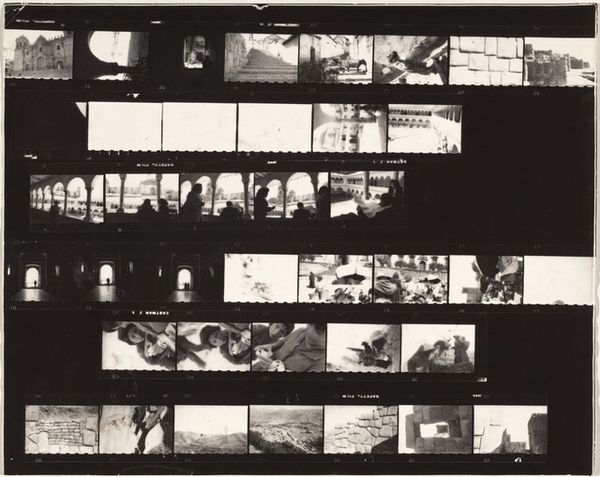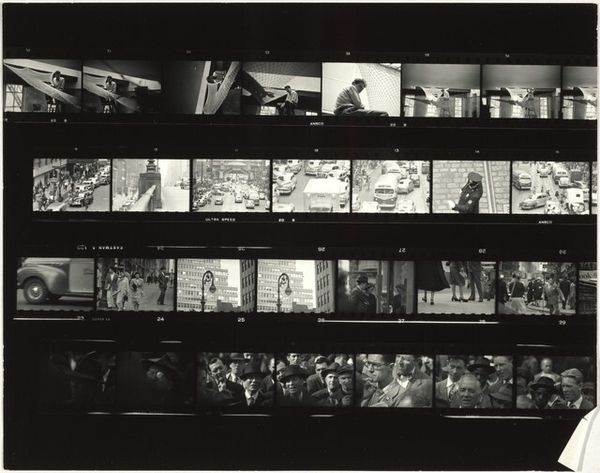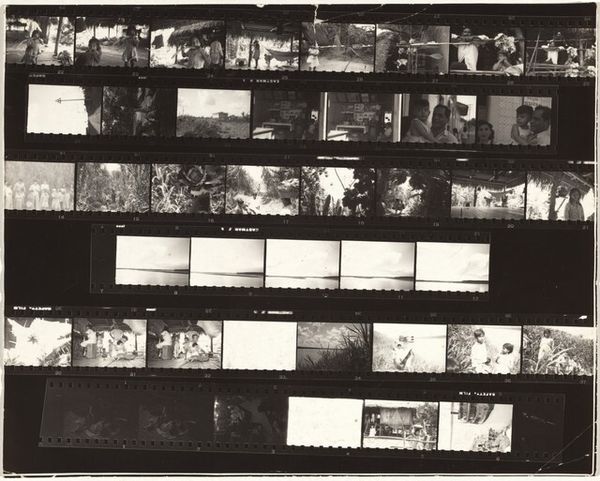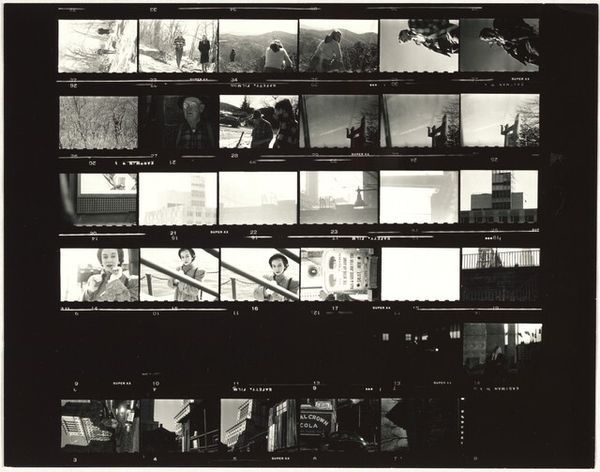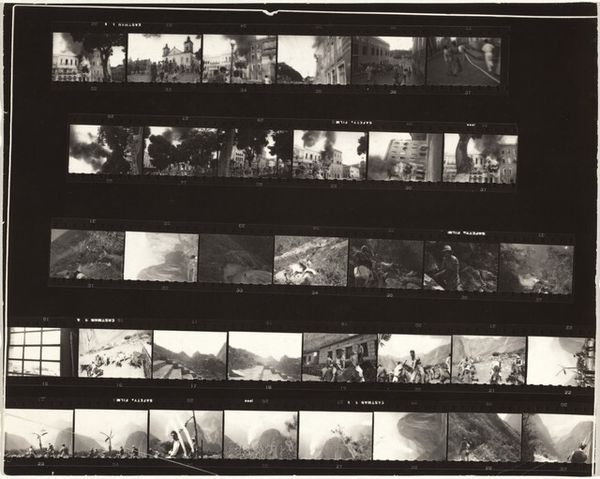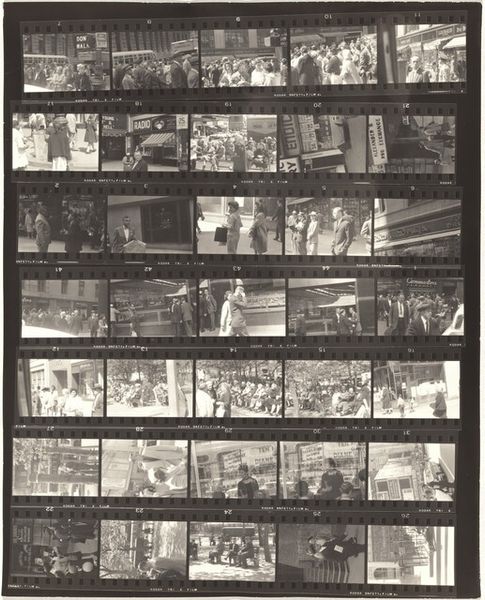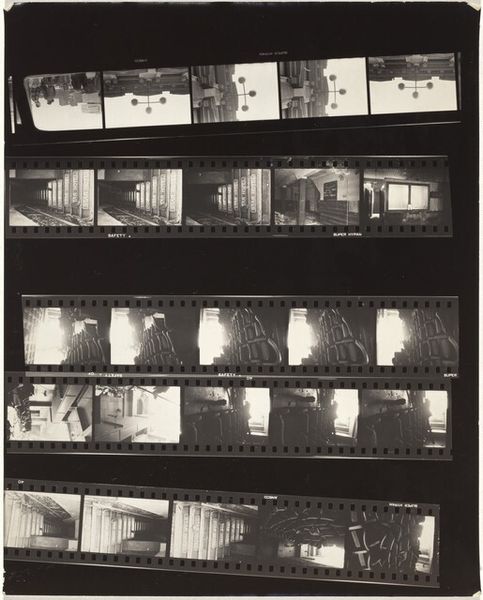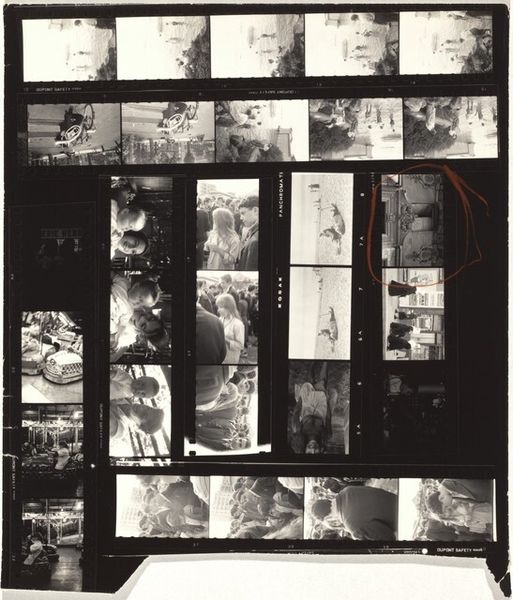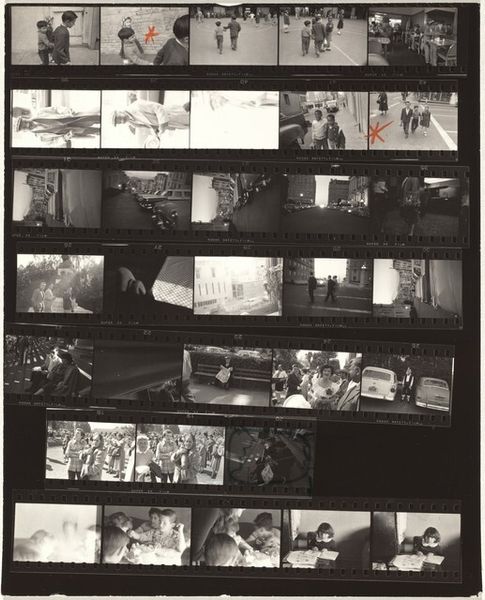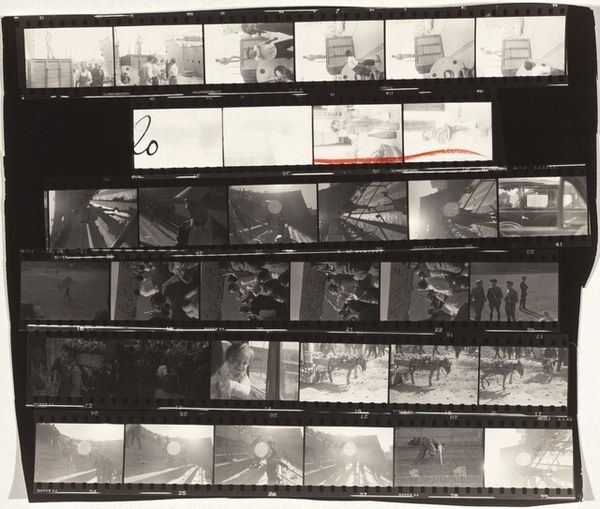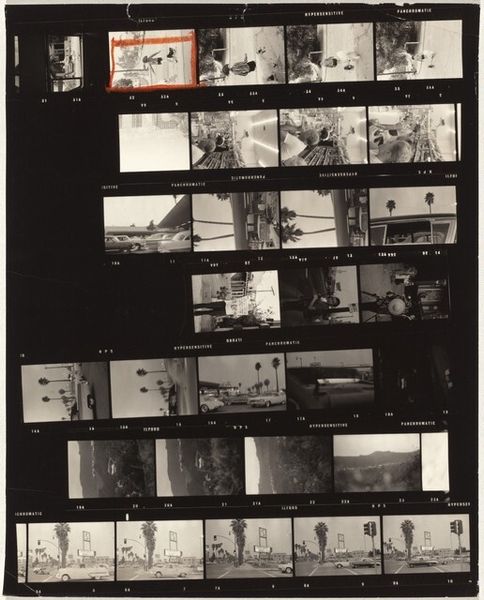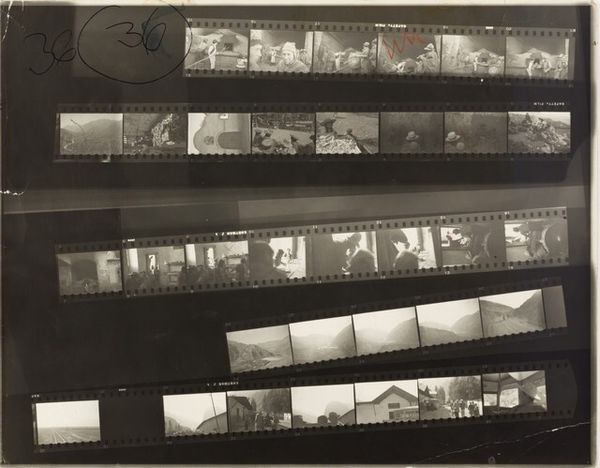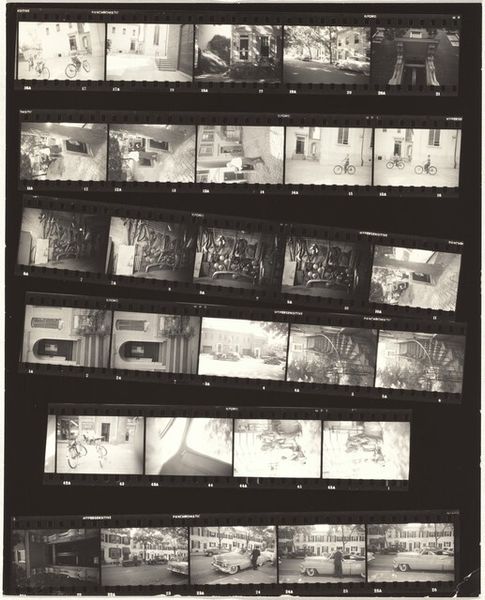
photography, gelatin-silver-print
#
portrait
#
abstract-expressionism
#
archive photography
#
photography
#
historical photography
#
gelatin-silver-print
Dimensions: sheet: 21.2 x 27.8 cm (8 3/8 x 10 15/16 in.)
Copyright: National Gallery of Art: CC0 1.0
Editor: This is Robert Frank's "Family, no number" from 1963, a gelatin-silver print, and my first thought is how raw it feels. You can see the whole roll of film with all the different frames—a mix of interiors, people, and then foliage. What grabs your attention when you look at it? Curator: The primary allure lies in the arrangement of these discrete photographic moments on a single plane. We observe a grid, almost a visual score, comprised of tonalities and varying depths of field. Observe the progression: interior domestic scenes punctuated by seemingly arbitrary images of flora. What organizing principle might Frank be employing? Editor: Do you think he's trying to contrast the domestic sphere with the natural world? Like, how the family exists within a constructed space versus the untamed growth of the plants? Curator: A compelling hypothesis. Yet, note the compositional similarities. In each frame, we see a play of light and shadow, an interplay of forms. The architecture within the home mirrors the branching structures of the plants. Perhaps the artist wishes us to consider them not as oppositional forces, but rather as variations on similar visual themes. Consider the interplay of black and white—where do you see high contrast and how does it impact your reading of the work? Editor: The contrast in the indoor shots is stark, almost claustrophobic, whereas the plants feel lighter, airier even. But the rough edges and visible film strip surrounding each image reminds me that it's all constructed. I guess it all feels more intentional now. Curator: Precisely. This deconstruction reveals Frank’s artistic intent; through careful consideration of formal properties, even seemingly mundane images can yield profound insights. Editor: So, by looking at the structure and form of the photograph, you can move beyond just seeing pictures and start understanding what Frank wanted to say about representation? Curator: Exactly. Formal analysis serves as a critical lens through which we might comprehend the artistic gesture and interpret Frank's visual language.
Comments
No comments
Be the first to comment and join the conversation on the ultimate creative platform.
